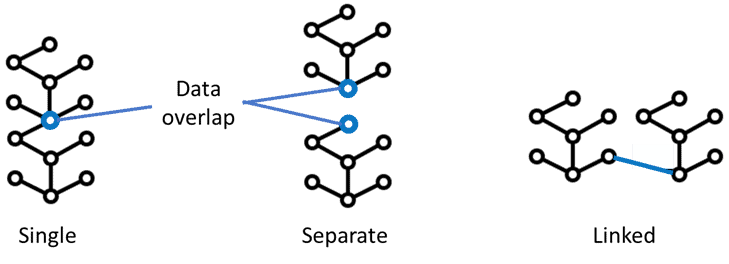In this post, we consider how relationships between the growing number of digital reporting standards can be engineered to increase the efficiency of the data across reporting ecosystems.
Digital standards
Reporting standards usually contain a narrative supported by technical details. The narrative explains the principles to follow, and the technical details give definitions and formulae explaining how to collate and calculate required figures. Crucially, digital reporting standards also provide a data-centric view that enables automation and computer processing of the data.
XBRL is the ideal technology for digital standards. Taxonomies are used to define complex (or simple) data linked to the narrative, with technical details embedded as definitions or calculations. “Anchored” extensions allow for the principles basis of a standard to be maintained while keeping the data model intact.
Relationships between standards
Digital reporting standards are becoming the norm. No standard lives in a vacuum, and they often cover topics closely related or even competing with other standards. Making sure that a standard is related in the right way, usually complementary rather than competing, needs to be managed by its authors.
An example of related standards is how new environmental, social and governance (ESG) standards are related to financial standards. These both are concerned with company reporting and, in the Annual Financial Report, they will even be found in the same document. The topics are different, but some overlap is inevitable.
This overlap is of particular interest and can be used to measure how much the standards compete to define certain data. The effects of this competition are ambiguity in the definition of disclosures that require both topics and additional work for preparers and analysts. The ideal situation is that there is no overlap between any standard, where they fit together like a jigsaw to create a full picture. While this is hard to achieve with narrative alone, the XBRL taxonomy, structured layout, simplified language and clear identification of individual data items makes more feasible to achieve.
The diagrams below show how this overlap can be managed by separating or joining standards at the data level.

Image: Options to manage the data overlap between taxonomies of different topics.
These taxonomy relationships reflect the relationships of the standards themselves:
- Single: Represents a single organisation writing standards on both topics, this would be the case if a financial standard setter extended their definitions with ESG elements.
- Separate: Represents specialist organisations working independently and will lead to conflicting data definitions where the data overlaps.
- Joined: Still specialist organisations working on their own topics, but with no redefinition. Instead, the overlap is handled through leaving a placeholder in one standard to be filled with the contents of another.
All these models are supported in XBRL, meaning that the standard setter now has the choice of how to engineer the desired relationship to others.
The impact of the chosen relationship
We can consider the approaches above in terms of the impact they have on the ecosystem. WE will consider three groups of stakeholders: the standard setters, the preparers and the analysts.
The single approach is simplest for preparers, however, it does mean expanding the speciality of the standard setter and, by not considering how overlap may be handled, the standard is unlikely to be taken up in other regions. This means that the resulting data set can end up isolated when it comes to analysis.
The separate approach seems the simplest for the standard setters, however, it means redefining items in other domains and puts the responsibility for resolving ambiguity and overlap on the preparers and analysts. In practice, while preparers are obliged to overcome these issues, this can present a sufficiently high barrier to put off analysts from using the data.
The linked approach requires additional effort from the standards setter. In return, they can keep strictly to their area of expertise and there is no overlap for preparers and analysts to deal with.
Given the variety of reporting standards and topics, the simplistic analysis here may not always be true. However, it does show how the relationships between digital standards can be engineered to put complexity in the right place and make the data more efficient. It is worth making the right choice.
Conclusion
Overlaps and relationships between related standards have always existed. Digital standards, make these explicit through the taxonomy and enforced through the data. This means that digital standards setters using XBRL taxonomies can engineer the desired scope of their standard and quantify the relationship to others.
CoreFiling provide automated taxonomy software and expert services to standard setters. Please contact us for more information.

